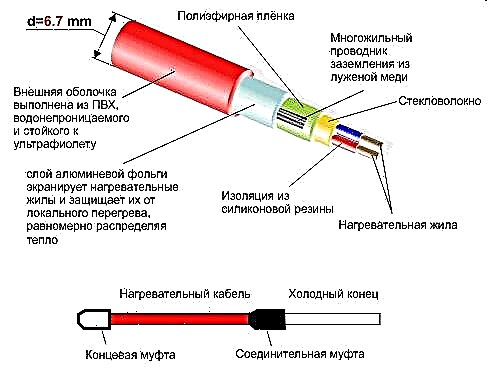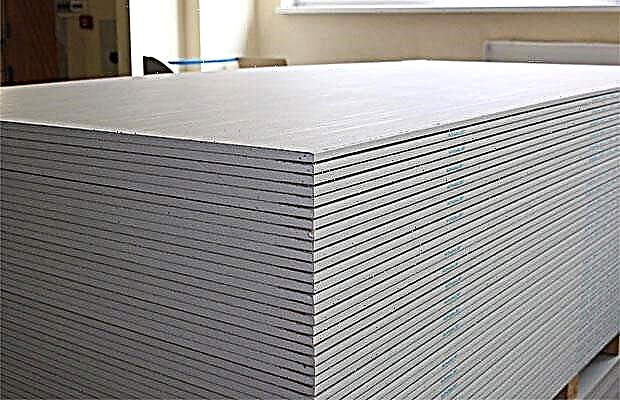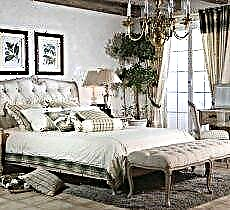
There is a huge variety of design solutions - tiles and wallpapers, drywall and decorative panels. But among them there is still an underestimated type of coating - textured plaster. It can be laid very carefully, and an attractive room design is formed. The practical characteristics of such a material are very attractive, in aggregate its properties allow you to decorate corridors, halls and many other rooms.
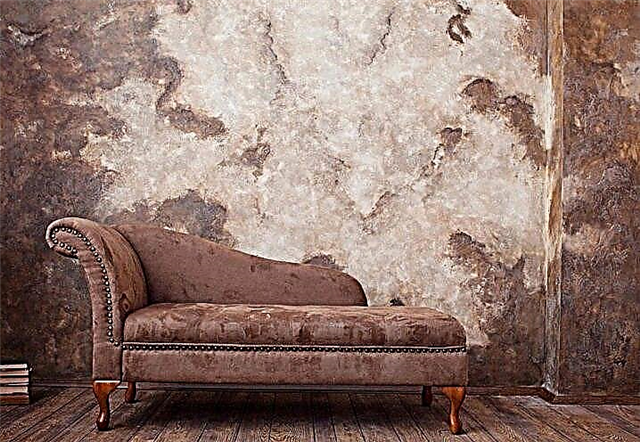
Features
Halls of private houses, apartments and halls of organizations, institutions, even with the most careful handling, are subject to rapid abrasion of coatings. After all, they store outer clothing and umbrellas, shoes and bags, bags and briefcases - all this brings moisture and dirt. Therefore, the coverage should be:
- minimally dirty
- discreet in appearance
- allowing frequent wet cleaning,
- resistant to friction and pressure
- harmoniously combined with other elements of the hallway and the apartment as a whole.
Textured plaster fully meets these requirements, while there are many types of layout, stylistic options.


Texture plaster can have a wide variety of fillers:
- organic fibers,
- small stones
- crushed brick
- ground mica
- silica sand and more.



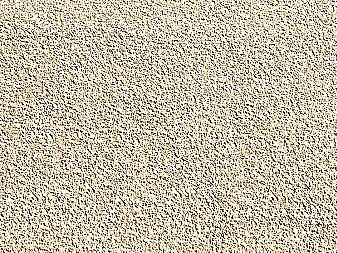
Thanks to this, it is possible to achieve non-standard shades and overflows of color. Technologists have learned to create wind effects in a sandy desert, velvet fabric, stone or wood cut. Regardless of the specific appearance, textured plaster can mask even very strong wall defects. The basis can be both a drywall sheet and a properly prepared cement wall.
Silicone plaster helps to finish the walls in hallways and living rooms, but its cost is very high. This circumstance is largely justified by the ability to wash and clean the surface while maintaining the appearance. Acrylic coating can include a wide variety of pigments, as a result of which its color varies very widely. In addition, even with significant temperature changes, acrylic materials are very stable.
The relative poverty of silicate plasters is offset by their low cost. Mineral compounds are a little more expensive, but they have their own advantage - the presence of cement in the composition allows guaranteeing resistance to water.

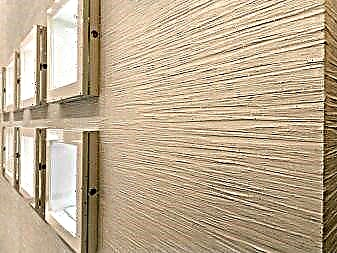
Selection tips
Those who do not have the necessary experience in applying textured plasters should not be shy about consulting with specialists. Any professional will be able to name several options of different cost, suitable in a particular case. You must immediately clearly determine the main task:
- cost savings
- the formation of a bright and non-standard interior,
- accelerated shutdown.
It is also worth studying the chemical composition of the mixture, in which there should not be hazardous impurities. Do not take the plaster in damaged packaging, with vague inscriptions and signs.
Technological moments
Both in a small apartment and in a large house, the method of applying textured plaster is completely identical. Smear it on the walls with a spatula, a roller, spatula or stencil will help to develop the relief. Individual varieties can be applied by spraying. If you use atypical devices for surface treatment (crumpled fabric, toothbrushes and shoes, needles and much more), the resulting look can become completely original. But in any case, you need to finish the preparation of the composition in 40 minutes maximum, because the plaster quickly hardens and loses its plasticity.
From here follows a simple conclusion: The exact surface relief must be imagined before ordering the source material. If you plan to create not a flat and even foundation, but a figured plot, you should immediately increase the consumption forecast by 50%.


The use of textured plaster will not succeed if the preparation of the wall was neglected or performed poorly. In addition to cleaning the surface, you must mask any defects, cracks and smallest holes with putty. Then a primer layer is applied to the wall, the plaster itself is laid and covered with a protective layer. In newly built houses, rough machining is not needed, you can immediately start priming.
Wall decoration in an apartment where there are pets is best done with compositions interspersed with natural stone or marble chips.
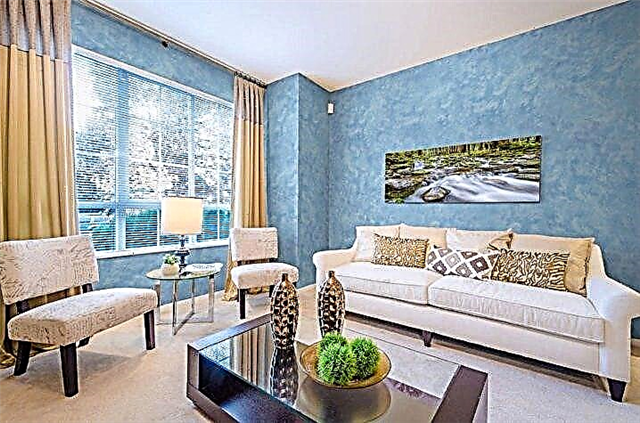
Design guidelines
Usually textured plaster is applied without any problems. The exception is the Venetian composition, which requires a virtuoso foundation preparation. Around the arched structures and doorways, it is advisable to use an imitation of a stone surface - a similar step creates an elegant look and does not complicate the work.
In the kitchen, the best results are obtained by acrylic textured plaster, which:
- environmentally friendly
- Convert to any color without any problems
- can even be applied on a relatively poor surface,
- dries up fast
- easily tolerates the effects of water.
Imitating stone types of plaster are suitable for kitchens of classical style. They give an equally attractive effect in an Art Deco setting, in minimalistic and modernist interiors. The most refined and aristocratic version of this design is the Venetian coating. By adding small crumbs of various compositions, it can reproduce the appearance of granite, marble, quartz and onyx surfaces. There are options covered as if travertine, malachite, jasper.

Stucco with the effect of deliberate aging and “gnawed by a bark beetle” is a rather popular solution. Such material is perfectly woven into both modern and classical compositions, and can be used in the style of a loft. Varying the working technique and the filler fraction, you can give the grooves a different depth.
Such a coating is easily compatible with the Venetian or Moroccan, when combined they form impressive interiors. Describing the result is superfluous; such projects should be made by professional designers, each time individually.
Concrete imitation is recommended for high-tech, loft, techno or minimalist kitchens. Such a solution is justified for covering walls, and for forming aprons in the working areas of the kitchen. So that decorative plaster on the apron does not suffer and at the same time the design concept has been fully implemented, it is advisable to use transparent tempered glass. Most often, “concrete” is painted in saturated gray, monotonous black or white.
But there are other options - paints with various shades in separate areas, reproduction of efflorescence, rust spots or gloss of pure metal.
It is not at all necessary to form a surface uniform in color; there are solutions with tinted “concrete” of bright colors. You can reproduce an old or brand new stone, smooth or rough masonry.
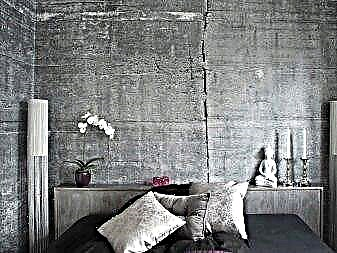
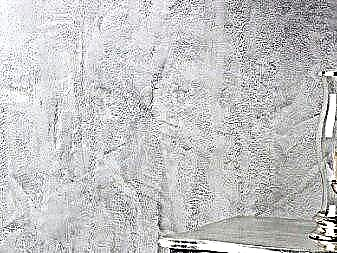
Sgraffito technique is even more attractive - first the coating is made as even as possible, then they scratch it with a stencil, creating drawings with all kinds of subjects. To form a multi-color composition, two or more stencils are used. On the walls of small rooms, layers of plaster, smooth or mottled with fine-grained ornamentation, are preferred.
It’s impossible to figure out among hundreds and even thousands of possible keys in the catalog without expert advice. It is also worth considering that textured plaster is not always a tinted mixture, some of the compositions are presented in pasty form.

You will learn about the correct application of decorative plaster from the next video.
The main features of the use of plaster in the apartment
Before starting work, it is necessary to decide which plaster to choose for the walls in the apartment. With the help of modern plastering materials, any relief can be created on the surface, which can then be painted, whitened or coated with wax and varnish. A master working with decorative plaster, according to your desire, will give the surface an imitation of a wooden or stone surface, brickwork, leather or fabric texture and voluminous figures.

Decorative plaster is a layered fine-grained or structured mixture, which is used to decorate the ceiling or walls.
The choice of decorative plaster for the walls in the apartment depends on the base material, but now universal mixtures are sold that can be used on any surface and in any room.
No matter what your walls are: concrete foundations in monolithic or panel houses, brickwork, wood or drywall, preparatory work and application technology are not much different.
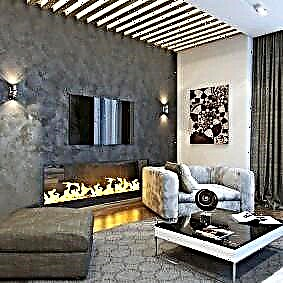


It is necessary to qualitatively gloss joints and cracks, clean the surface from dirt and dust, apply a primer layer for better adhesion of the base and plaster. And proceed with plastering in accordance with the instructions for the use of mixtures.
Advantages and disadvantages
Decorative plastering of walls in the apartment will allow you to create a unique design, and a variety of materials will help to complete the repair with a beautiful design.
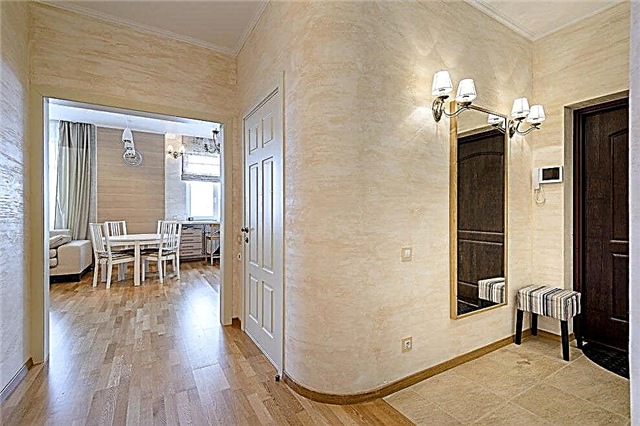
It has an aesthetically attractive appearance and high performance.
But all the materials offered in stores have their pros and cons.
The advantages of decorative compositions:
- Strength. When properly applied to the base, the layer is not subject to a humid environment and mechanical stresses, it can be used in the bathroom and in the kitchen.
- Durability. The right choice of mixture will create a beautiful surface that does not crack and does not fall off the wall for many years.
- Universality. Modern decorative compositions are suitable for any basis.
- Security. The compounds are made from natural materials that do not cause allergies and poisoning.


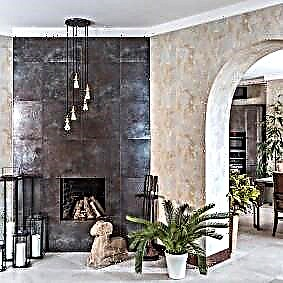
A few disadvantages to consider:
- Price. The cost of decorative mixtures is much higher than that of conventional compositions, but the effect is much more interesting and beautiful.
- Complexity. Without certain skills and knowledge, it is unlikely that you can create a beautiful texture with your own hands, but if you experiment a little, you will get a truly unique design.
- Exactingness. To perform complex textured forms, high-quality preparation of the base and strict implementation of the manufacturer's instructions are required.

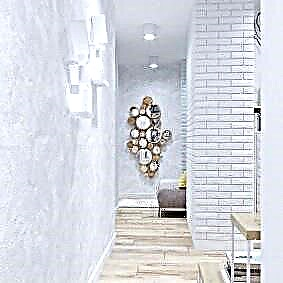

Types of decorative plaster
After looking at the photo of the plaster in the interior of the apartment, you can choose the most suitable texture, which you want to see on the walls of your house.
This view in the interior of the apartment looks most beautiful than other compositions. The mixture can be applied on both vertical and horizontal surfaces, often columns are treated with such plaster to create a Gothic style in the interior. Using the Venetian, a noble texture of marble is created with unique stains and a glossy surface, which is achieved using wax. By adding coloring pigments to the composition, any surface color or natural shade of the stone can be achieved.
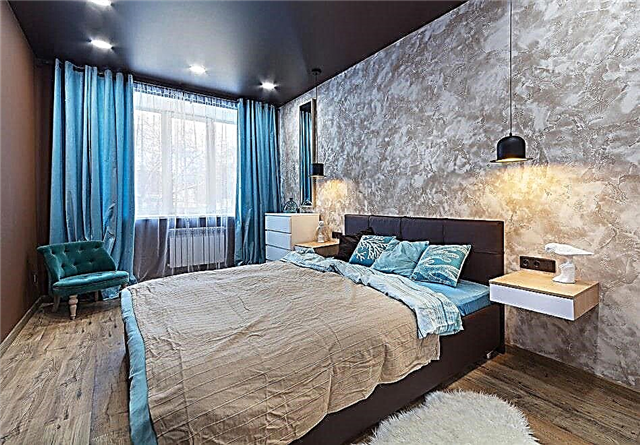
The Venetian has a very beautiful complex shade and perfectly imitates noble natural stone breeds.
- Structural plaster
Structural compositions, due to the heterogeneity of the components, can give the walls any texture, and with the addition of coloring pigments, color. Thanks to different compositions, you can easily create on the surface an imitation of stone, wood, textured fabric or leather. The composition perfectly masks the imperfections of the wall and gives protective water-repellent properties. The mass is very plastic, with which you can work independently without resorting to the services of specialists. Also, with the help of structural mixtures, unique and beautiful bas-reliefs are created with the addition of decorating elements - these can be pebbles or shells.

The structure and severity of the pattern depends on the size of the particles in the composition.
- Textured plaster
A textured mixture is used when it is necessary to achieve different effects on the surface - it is an imitation of aging and cracking, a rough texture with different depths of relief. The color of this texture can be varied. Using textured plaster, you can create an absolutely unique design.

Using this decorative coating, various imitations of textures are created, for example, it can be natural stone, thin-layer sand concrete, porcelain stoneware or wood saw cut.
- Flock plaster
Flock plaster contains particles of acrylic paint resembling flakes or flakes. They can be round or multifaceted and monochromatic or multi-colored with pearlescent and metallized tint. You can experiment with flocks by creating original multi-colored patterns and ornaments on the surface.

It goes well with other finishing materials.
- Marble plaster
Marble compositions based on acrylic with the addition of natural crumbs of stone, most accurately imitate the texture of marble. After applying such a mixture, few will notice this imitation. It is made in a various color palette, brilliant blotches and nacreous tints can be added to structure.

Resistant to temperature changes, sunlight and other negative factors.
- Silk plaster
Silk plaster when applied to the walls has the texture of natural silk, which shimmers in the sun. When applying it to the walls, the impression of using natural material is created. This effect is achieved by adding silk to the composition. It is more durable and durable than wallpaper, so it is most in demand among consumers.

Perfectly hides bumps and defects present on the surface.
The better it is to plaster the walls in the apartment, it is up to you to decide all the mixes are suitable for interior decoration, they are safe and have their own unique texture.
Modern plaster contains additional components against the appearance of fungus and mold and is suitable for any room in your home.

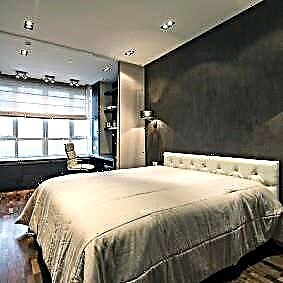

Also, all mixtures have additional useful properties - this is waterproof, sound insulation and additional wall insulation.
The compositions of the mixtures used in apartments
The most common formulations that are made on the basis of sand and cement with the addition of polymers for better adhesion to the base. Such materials can be used in any premises. They create a particularly strong layer, which is very easy to apply and process in the future.

It has a long service life.
They are particularly flexible and have water repellent properties. Due to its plastic properties, it is most often used in decorative surface finishes.

Like the previous variety, it can be suitable for decoration of a variety of surfaces.
- Silicate.
The material has excellent heat-saving, noise-insulating and moisture-proof properties. When antiseptic components are added, it is used in rooms with high humidity. Creates a durable layer that perfectly tolerates mechanical damage, does not crack and does not collapse.

The mixture is based on potassium and sodium silicates.
- Silicone
Material based on silicone components allows you to enter into it a variety of decorating components. Based on this composition, plaster with the effect of a stone surface is made, after drying, the layer is not inferior to the stone in beauty, strength and durability.

Such plaster is most often represented by a ready-made mixture.
A variety of modern materials removes the question: how to plaster the walls in the apartment. Choose the necessary texture and color of the walls that are necessary for your design idea and bring it to life.
Where and how is textured plaster used
For those who intend to once again do their own repairs, it makes sense to master the new cladding technique with relatively new finishing materials. Many have heard about the wide possibilities of decorative plaster in a modern interior, but with this choice they usually hire a specialist. Then repair using relatively inexpensive materials results in a decent amount. Of course, the aesthetic surface will perfectly last for many years, but if you do everything according to technology, you can get the same effect.

The interior of the room is designed in one color scheme.

Decorative plaster will be combined with absolutely any design
Everyone is pleased that the house has an exclusive atmosphere, a welcoming atmosphere and creative design. It depends on many factors, including the choice of coating. Some textures obtained by processing walls of different materials are perfectly combined with each other. At the same time, decorative plaster and artificial stone in the interior can be an excellent alternative to expensive natural analogues:
- wild stone
- flexible or stone wallpapers,
- porcelain stoneware with imitation stone,
- designer wall plaster with the effect of gems (malachite, agate, jasper, onyx, charoite),
- Venetian marbled plaster
- tiled materials for artificial marble, granite chips, etc.

Decorative plaster can be used not only on the walls, but also on the ceiling

You can make completely different patterns with decorative plaster

In today's world, the theme of wall decoration with decorative stucco is very popular.
Decorative plaster and wallpaper are also a good combination if the pattern and texture match each other. The plaster can be painted with the same paint as the painted wallpaper. It will turn out a magnificent one-color decor with a different surface, as in the photo.
Not every texture is available to a beginner; some technologies require certain knowledge, experience and possession of a special tool. But if you do not pretend to be “princely mansions” or a palace interior, you can choose a more affordable cladding. For example, using budget liquid wallpapers and decorative plaster in the interior of the hallway and living room, other rooms are even more modest to repair.

A great option would be to wall decoration with decorative plaster

Decorative plaster will perfectly replace the wallpaper
However, it is important to consider that there are 2 types of cladding:
- Facade or exterior plaster mix.
- Finishing (for indoor) base.
- Universal type of plasters.
In accordance with the stylistics of the design, this will look no worse than the expensive finish made by professionals, as in the photo.
Facade paint and plaster cannot be used for interior decoration; they may contain chemical components that are harmful to health. They evaporate after processing. But such a composition provides special resistance to moisture, rain and frost.
Universal - for any type of surface, but they are more expensive. Decorative plaster for the interior of the interior is not used as an exterior finish. It is subject to destruction from temperature and precipitation, but it refers to environmentally friendly compounds.
The most expensive and difficult to apply is the "Venetian" based on gypsum, stone dust (granite, marble, quartz), lime and binders. It is applied in layers and opened with a special wax.

Decorating the wall with decorative plaster is a great option.

Decorative plaster is used not only on walls, but also on ceilings.

The patterns on the wall will make it more practical.
The composition of the plaster mixes
Apply to prepared surfaces, suitable for indoor use (hallway, living room, bedroom)
The basis for the structural plaster of various types in the interior (on glazed loggias, in the hallway, corridors and bathrooms)
On concrete slabs, brick walls, cast cement walls and cement surfaces, suitable for rooms with high humidity
(latex based, finished)
To upgrade masonry and old surfaces, waterproof (suitable for kitchen, bathroom, bathroom, hallway, attic, covered veranda)

All walls in the room are made in one color.
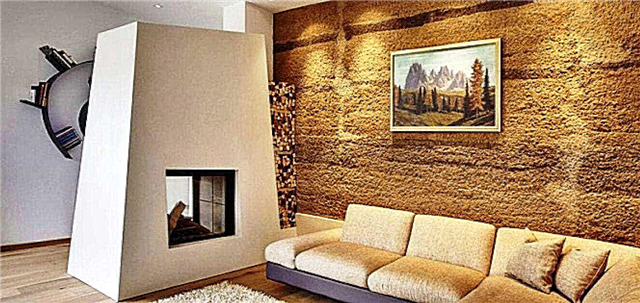
An example of a great combination of design with decorative plaster on the wall
Attention! Before buying, look at the building supermarket for your favorite samples, study the instructions, calculate the consumption per square meter, select the pigment of the desired color.
Some compositions for the original design of walls with decorative plaster are available on an acrylic or cement basis with various additives to obtain a relief. The budget way is to mix dry putty with PVA glue, water, sand, dye and texture inclusions. Dry additives (large and small fractions) and pigment can be purchased separately to add to the plaster or liquid wallpaper. French stucco in the bedroom interior looks delightful, resembling silk, thanks to the "flock" composition.

In today's world, the theme of wall decoration with decorative stucco is very popular.

Decorative plaster can be combined with absolutely any design

Decorative plaster around the fireplace will perfectly complement the interior of the room
Tips
- For beginners, it is better to use mixtures that are easy to apply, and make the relief with special screen rollers that roll in a certain direction.
- "Bark beetle" is made with special granules, moved with a spatula.
- From gypsum mixtures, you can sculpt flowers, bas-reliefs and other voluminous decor. But they quickly set, so the mixtures are kneading a little, they work quickly.
- If there was no prior experience, it is better to work with a draft version on a small surface, for example, on the end wall of a balcony or in a toilet. But the silicone mixture is more suitable here, although it is considered relatively expensive.

You can make completely different patterns with decorative plaster

White decorative plaster looks very cool
Advantages of decorative plaster
Although this type of decoration is not yet as popular as wallpaper, painting and tile materials, still textured plaster in the interior has a lot of “pluses”:
- unlimited possibilities for creating an exclusive design of any residential premises,
- creative self-realization in the creation of decorative panels, stucco paintings and bas-reliefs on any subject,
- an original way to emphasize the style of the interior with an inimitable texture, complemented by thoughtful lighting,
- a relatively fast way of facing, if you work and instructions and stock up with a suitable tool,
- a way to hide small wall defects and work on top of the primer on an unprepared surface, if it does not involve strengthening and removing the old coating,
- the opportunity to realize a grand design idea using a relatively inexpensive finishing material,
- the treated surface is not subject to dampness and mold, living organisms do not start in it,
- strength and durability of decorative plasters in the interior, easy care with the possibility of updating the paint,
- environmentally friendly composition “breathes” (absorbs excess moisture and gives away relative humidity as it normalizes),
- an excellent alternative to expensive natural finishing materials with imitation of their texture (wood, stone),
- the possibility of using on the walls of the ceiling and any inclined and arched surface inaccessible to other finishes,
- on top of decorative plaster, you can apply images, draw panels, paint the wall with passes, open with wax, spray paint or varnish, work through a textured roller with dye, apply a different decor.
Feel free to experiment with this finish. Even if something doesn’t turn out as perfect as we would like, the textured base is better than a trivial repair of obsolete materials. A durable coating will last for many years, since it is not subject to destruction by mechanical stress, flooding by neighbors and excessive humidity.

A great option would be to wall decoration with decorative plaster

Bedroom design in one color

Gray decorative stucco in the living room will look cool
Where is it better to use a textured surface?
Various types of decorative plasters are used to emphasize the style.
- The mineral mixture is a great opportunity to get decorative cracks that mimic the antique wall surface in retro style, vintage, shabby chic, country and provence.
- Stucco molding from gypsum-based decorative plaster is an excellent decor for decoration in the style of Art Deco, Art Nouveau, Empire style and antiquity.
- Luxurious “Venetian” - for the palace interior and decoration in historical styles (Baroque, Rococo, Renaissance, Classicism).
- Urban styles imitate rough cement surfaces - gray decorative plaster in the interior of a loft, techno, high-tech, brutalism or unpredictable futurism.
- The acrylic base is considered quite versatile, it is suitable for decoration of premises of different functionality, it is decorative plaster in a Scandinavian interior, in the spirit of Japanese minimalism or for high-quality repairs with a slightly pronounced stylistic tie.
- A silicone-based plastic mixture is a high-quality surface treatment that can become the basis for ethnic and classic wall decor.
- Regardless of the basis, you can choose any decorative plaster in the interior of the living room, bedroom or nursery, imitating silk, velor, suede, leather and even grass. There are also such proposals, it is easy to make an inimitable eclectic interior with modern styling with them. But you can choose the original texture for fusion, ecostyle or author's design, without adhering to strict canons.

You can make a picture of decorative plaster

Decorative stucco in the bedroom will look very cool
Universal mixtures are suitable for the bedroom and the nursery - they are completely safe.
For decorating the hallway, corridor, kitchen, bathtub and toilet, it is better to choose moisture-resistant and “breathable” compounds. All parameters are indicated on the packaging or in the technical description on the catalog pages. The color of the illustrations may vary, but the texture in them is clearly visible. Pigment or "color" can be chosen any, as long as it is compatible with the base.
About how to work independently with decorative plaster, experts will share secrets in a detailed video.
More interesting examples of design with decorative plaster are in our photo gallery.
What is the material?
To create a fashionable and modern interior today, you have to keep up to date and use the latest innovations and scientific achievements.
Textured plaster - a relatively new inventionHowever, it has become particularly popular only in recent years. Textured plaster is a special kind of regular plaster, however, to a greater extent it refers to decorative finishing materials with a relief effect. However, this material is suitable for both internal and external finishing work.


Using this kind of plaster, you can achieve a very unusual relief on the walls, without resorting to the use of special tools and additional tools. Moreover, you can do the finishing work yourself, without turning to specialists for help.
Textured plaster is considered very viscous., it may include a variety of components, depending on the manufacturer. In general, such building materials are considered safe for humans and the environment. You can find this kind of product in various colors and shades. In addition, if you do not have the color you want, you can easily create it with the help of a color scheme, while adjusting the necessary shade intensity.

A wide range of
On the shelves of shops you can find decorative plaster for a variety of interiors not only from domestic but also from foreign manufacturers. Of course, the second options can cost more.
The main types of decorative plaster, which some experts share in composition:
- Mineral This variety is mainly sold in dry mixes and powders. Suitable for covering stone surfaces and for rooms with high humidity, as it is not afraid of temperature changes.
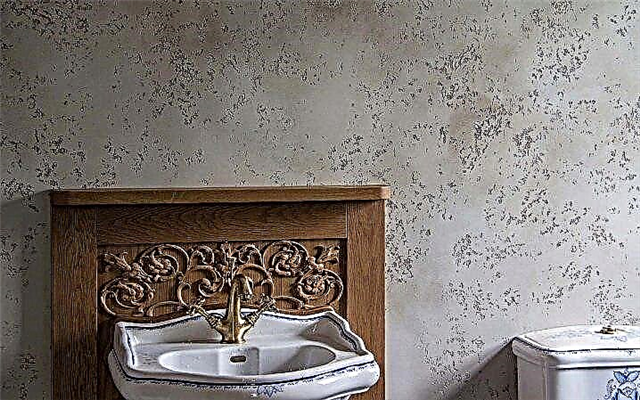
- Silicone Such plaster is most often represented by a ready-made mixture. It is suitable for a wide variety of surfaces, including unprepared ones.

- Acrylic Like the previous version, it can be suitable for decoration of a variety of surfaces,

- Silicate. The mixture is based on potassium and sodium silicates.

- Popular polymer a variety that consists of acrylic resins.

One or another type of plaster should be selected taking into account all the features of the room. Structural and textured plasters can easily imitate a variety of textures. It is not necessary to use special tools to create a picture. An ordinary spatula or roller will be enough.
Textured plaster is mainly used to simulate natural stone or aged and exotic surfaces.

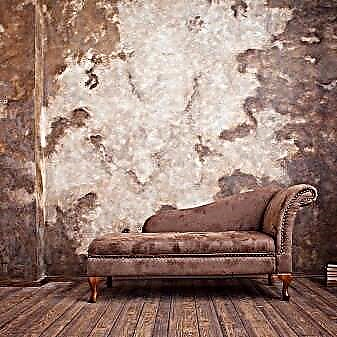
Where is it used?
A wide range of applications of decorative textured plaster is due to the fact that it lends itself to excellent adhesion to a wide variety of surfaces.
It turns out that with the help of decorative plaster not only complement the interiors of houses and apartments, it is also used as a complete finishing material for facades and a variety of external walls of buildings.

In the interior design with the help of textured plaster, you can supplement the walls and ceilings of the bedroom, living room, hall, hallway, kitchen and even the bathroom (if we are talking about waterproof compositions).


Many experts prefer textured plaster as a finishing material. in the hallway and in the corridor, since these are exactly the rooms where the walls very often get dirty and fray. On the textured surface, any imperfections will be completely invisible due to such an unusual coating.

Since textured plaster is very simple and unpretentious to care for, and many of its types are not afraid of moisture, it can easily be used to cover surfaces in the bathroom and in the kitchen.

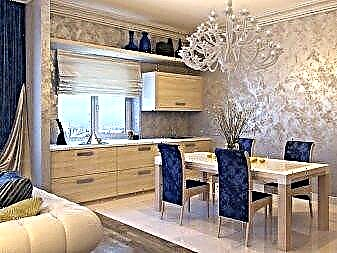
Basically, the scope of plaster in the interior of the house is limited only by imagination, so do not be afraid to experiment and bring to life the most unusual and bold ideas.
Options in the interior
Using textured plaster, you can make beautiful zoning of one large room. It can be a living room combined with a bedroom, or a studio apartment, in one room of which you need to place two or three functional areas.

Using textured mother-of-pearl plaster, you can recreate a real sea wall in the living room, which can later be supplemented with decorative miniature shells.

Creating some concrete drawings with a spatula, you can try to depict tropical leaves and palm trees.

The combination of plaster with other finishing materials looks very good. Many professionals use this technique, decorating only one wall with stucco, and covering the rest with wallpaper. Sometimes one wall is covered with photo wallpaper, and on all the others there is a beautiful textured stucco under the stone.
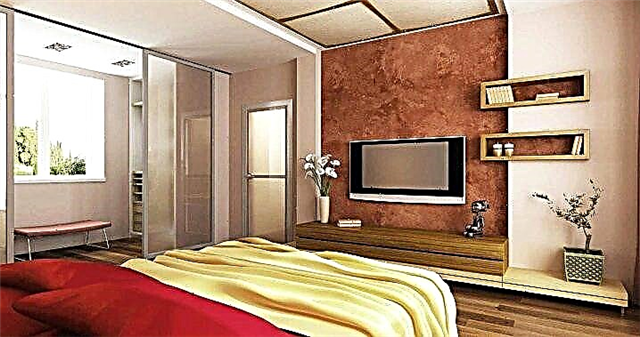
Also do not forget that for small rooms it is best to use light shade plaster, which will help visually expand the space. For spacious rooms, light shades of finishing materials are also suitable, but in this case they can be combined with brighter, darker and more saturated colors.
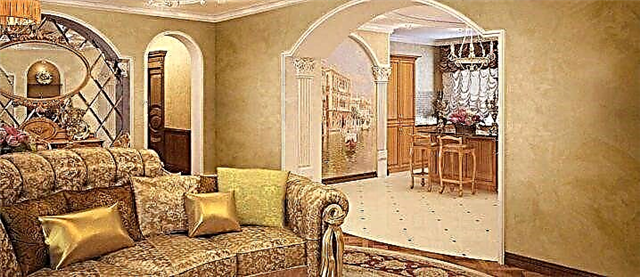
Many modern hi-tech or techno interiors can also be complemented with materials such as textured plaster. However, such styles require the use of only a cold palette of shades: dark, gray and white.

If you are not sure that you can independently choose the texture plaster of the desired type and shade for your home, it is best to use the services of real professionals and consultants in finishing materials.
Disadvantages of decorative plaster
During the procurement, decoration and operation of the material, despite all sorts of advantages, one can encounter tangible disadvantages. For example, the cost of some types of plaster is quite high, as well as the work of applying it. Some types of plaster require complex surface preparation, others are not strong enough for exterior decoration and are suitable only for interior ceilings.
The disadvantages include a few more points:
- if the house is located in a seismically active area, then from its walls during the shocks the plaster will collapse or crack,
- if the room is very humid, then the coating will not last long,
- if the apartment is in a new building, then cracks may appear on the walls due to the process of soil shrinkage under the house.
Varieties of decorative plasters
Today, manufacturers produce many different types of decorative plasters. They differ not only in appearance, but also in composition.
Depending on the components that make up the plaster, it is conditionally divided into 5 types:
Mineral viewbased on dry cement, is available in powder form. It is used to cover stone and brick planes. The composition withstands humidity and temperature differences. It can be recommended for application in the bathroom.
Silicone look Available as a ready-to-use mixture. It lays well on an unprepared surface - wallpaper, brick, old wall surface. After drying, the plaster does not let water through, therefore it is suitable for decorating the bathroom, as well as the kitchen or hallway.
Acrylic look available in a liquid state, which allows you to apply the composition to any surface. Due to its high decorative properties and covering ability, it is recommended for living room decor. Acrylic plaster is available in various colors.
Polymer view very similar to acrylic, as it is based on acrylic resins.
Silicate look available as a ready-to-use mixture, based on liquid glass. The composition well covers any surface, is the basis of structural plasters.
To create a structural surface resembling stone, sea wave, wood, or vice versa smooth silk, the craftsmen use various in appearance, fillers and properties of plaster.
The most popular types of decorative plaster:
1. Structural plaster is able to imitate various patterns and textures that the master applies using various tools (dies, rollers, spatulas). The appearance that the surface will acquire after applying the plaster depends entirely on the skill of the plaster, the number of layers of material and the thickness of the layer. The most common and popular type of structural plaster is Bark beetle. Available in white or gray, if necessary mixed with pigment to obtain the desired shade.

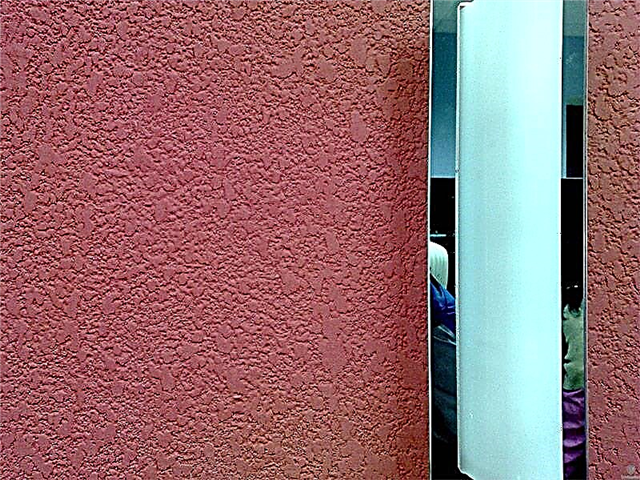

3. The flock or silk look of the plaster contains silk fibers in the composition, after application it acquires an elegant look that resembles the luxurious appearance of silk fabric.

Due to its beautiful decorative appearance, flock plaster is most often used to decorate a bedroom or living room. To the touch, it is similar to ordinary wallpaper, it is an environmentally friendly and natural material that breathes, passes moisture. Due to its high transmittance, mold and fungus do not appear on the flock coating even in high humidity. Therefore, it is recommended for application in the bathroom, nursery, dining room and other residential premises.

4. The marble look is distinguished by the small or large fractions of natural marble included in the composition. The mixture has a diverse appearance due to the size of the fractions, the color, creates a beautiful coating on the wall. Decorative stucco in the marble interior gives the wall an expensive look, serves for a long time and does not lose its qualities during operation. It withstands humidity and temperature differences. It is used in various living rooms and in the interior of public spaces.
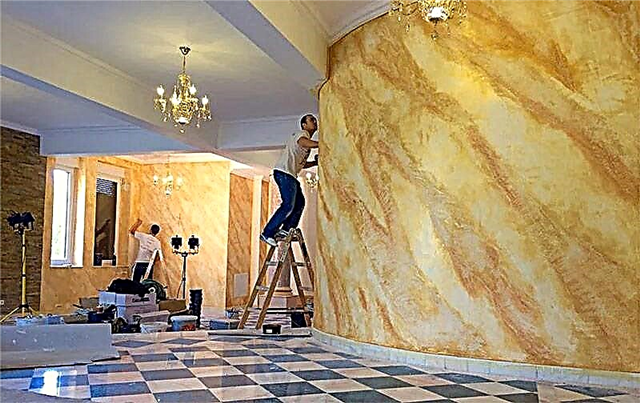
5. The Venetian look - one of the most spectacular and expensive types of decorative plaster. It creates an attractive, luxurious appearance of the plane that it covers. It is used to cover both walls and ceilings. Over time, Venetian plaster does not lose its decorative qualities, it only becomes more beautiful. Such a quality is inherent only to this species, which compares it favorably with others.
The Venetian look can be tinted in any color, due to which the interior design takes on a more artistic and sophisticated look. It is almost impossible to apply Venetian plaster on your own to the surface; only an experienced craftsman with good skills can do it.


6. "Africa" - a famous species with the texture of crocodile or snake skin. Often this type of decorative plaster in the interior is used in order to emphasize the ethnic flavor of the design. The coating looks expensive, the appearance of the master is supplemented and modified with the help of various finishing coatings - wax, glitter, paint.

7. Another popular species is the Marseille Wax. It gives the surface the appearance of an old masonry made of savage or sandstone. Usually in the interior use this type of putty light sand color. It gives the interior a cozy warm atmosphere.

8. Plaster imitating the texture of the fabric. Such coatings have an unobtrusive pattern and look very rich in the interior.


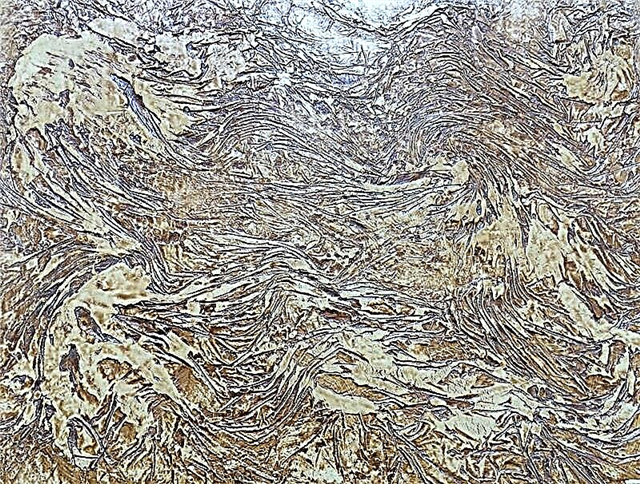
9. Various types of plaster such as "Coarse stone" and "Torn stone".



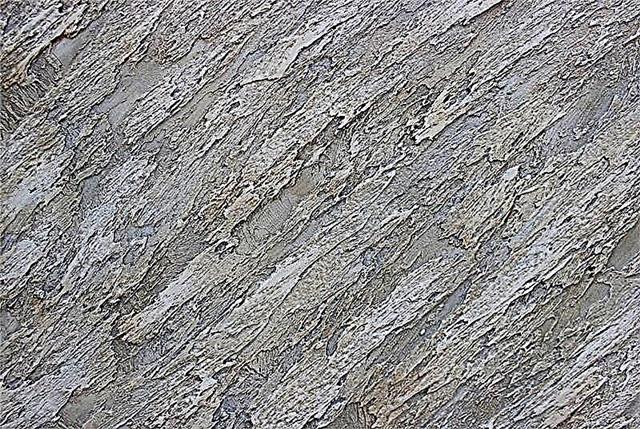
10. Plasters like "Rustic" allow you to create the effects of shabby stone. Are applied at registration of interior design in historical style or country style.
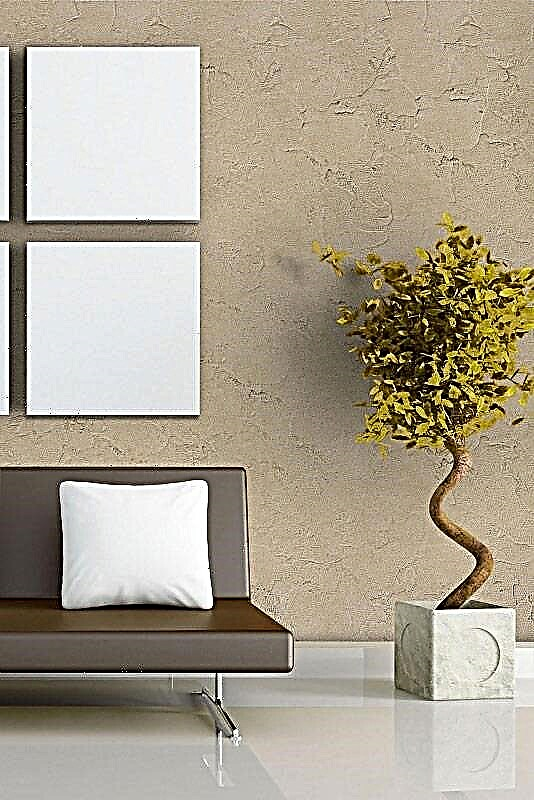

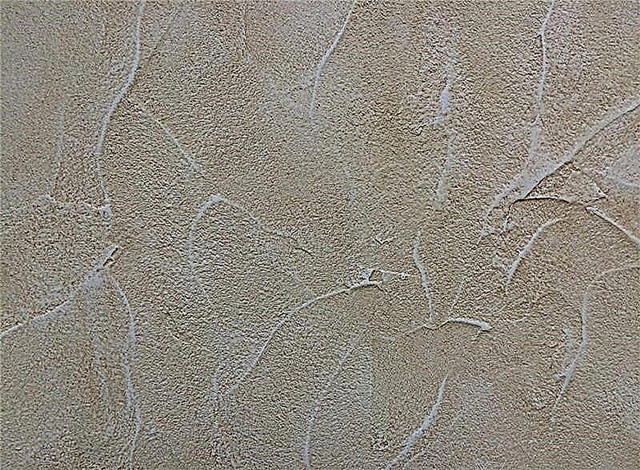

11. A number of decorative plasters with the effect of "Cracked wall".



How to choose decorative plaster for the interior
To choose the appropriate type of decorative putty for the interior of the room, several factors are taken into account:
- the area that needs to be decorated (the larger the area, the more expensive the cost of consumables and work will come out),
- features of the wall or ceiling, that is, what the plaster will be applied to, some types are well suited for finishing concrete or brick (textured, for example), while others can only be used on a flat prepared surface (Venetian, Marseille wax),
- climatic conditions - you can choose any view you like in the living room or bedroom, but for rooms with unstable indicators you need to choose the composition more carefully, usually for the bathroom or kitchen choose a silicate look, which over time can be repainted and updated.
For the living room
Decorative plaster in the interior of the living room can be used as the main finishing material or in combination with wallpaper, wood or stone panels. In the living room in the classical style, not only walls can be plastered, but also a ceiling with stucco elements.
To visually increase the area of a small room, it is better to choose a light shade coating with good reflective ability for decoration. For refined and elegant interiors, most often choose Venetian plaster, which gives a golden or silver sheen.


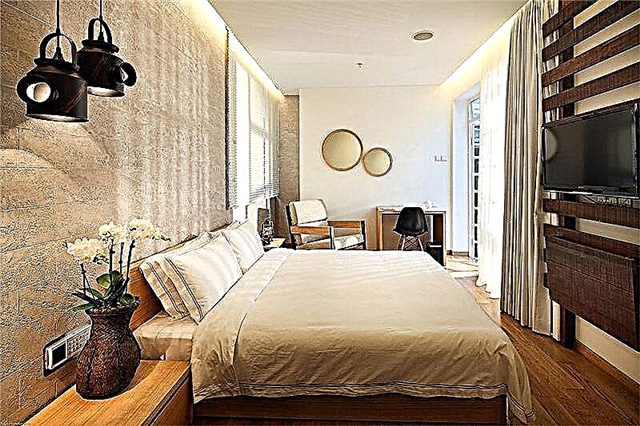

For the bedroom
Wall decoration in the bedroom with decorative plaster is a guaranteed long-term and environmentally friendly way of decorating the room. To create a cozy interior, use flock plaster of muted, dark shades. To create a volumetric effect on the walls or to emphasize architectural elements, choose a mixture with large fractions.


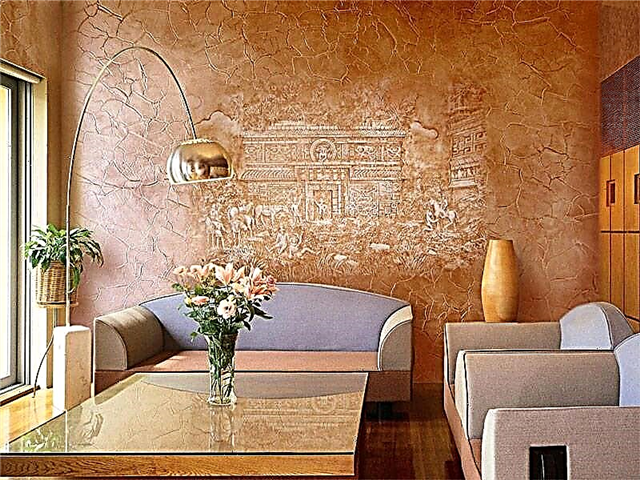

For kitchen and bathroom
In order for the coating to last longer, for rooms with extreme climatic conditions, decorative acrylic based putty is selected. It allows the composition to withstand fluctuations in temperature and humidity, while allowing air to pass through and is not covered by mold. This is a very important aspect, since not all types of plaster can also withstand the destructive power of moisture and fungus.



After the plaster has dried on the surface, it can be coated with a protective layer, paint or wax. Such a coating will help to preserve the appearance and facilitate the care process. To clean the plastered wall, just walk on it with a damp cloth.

